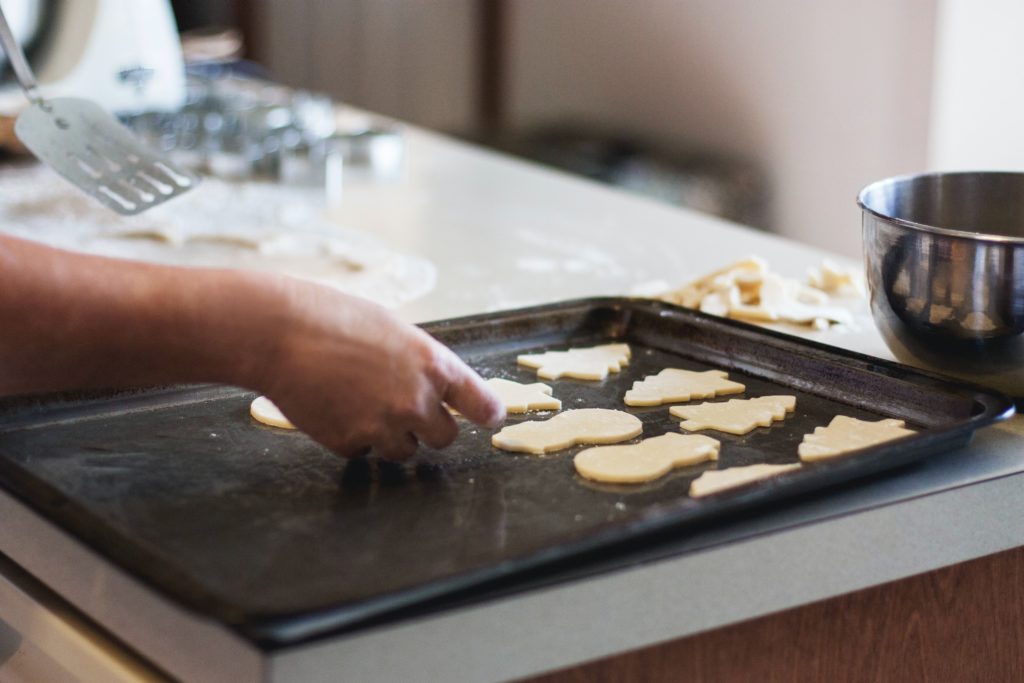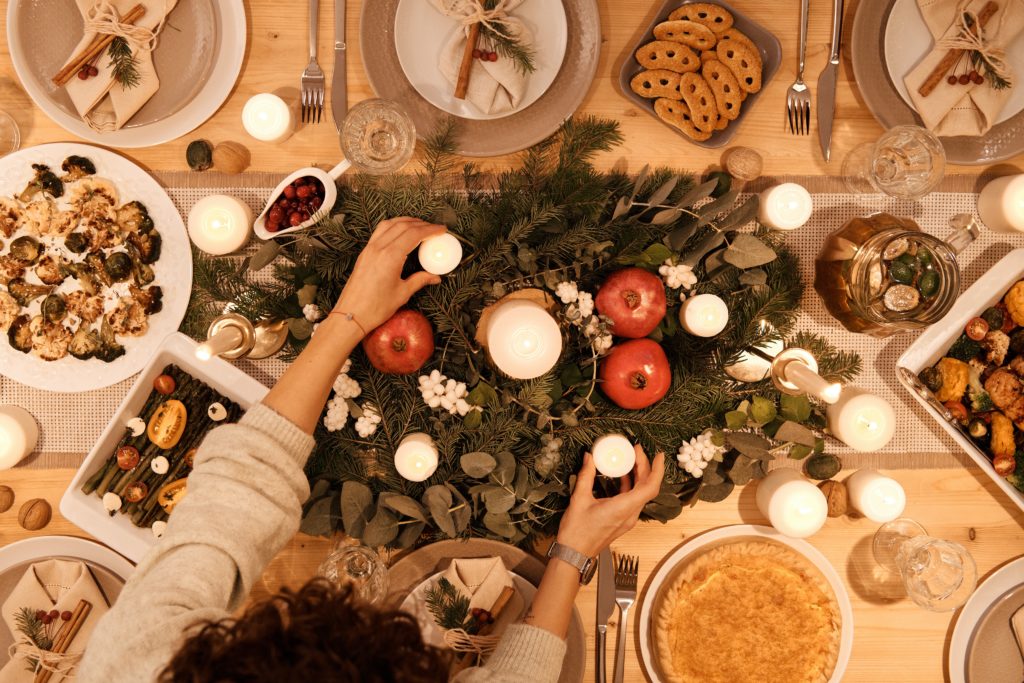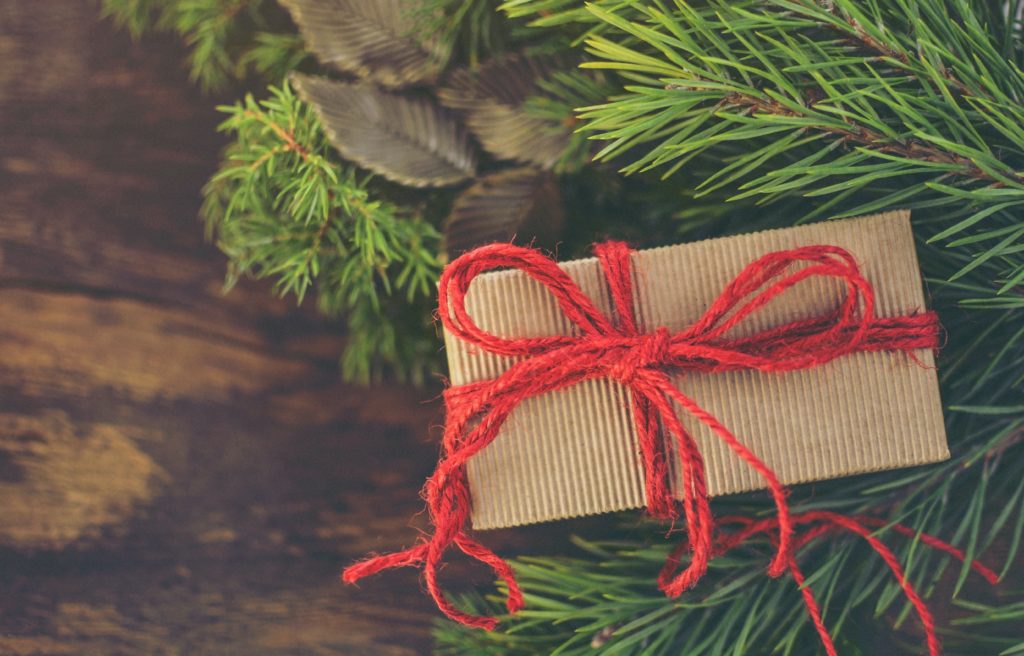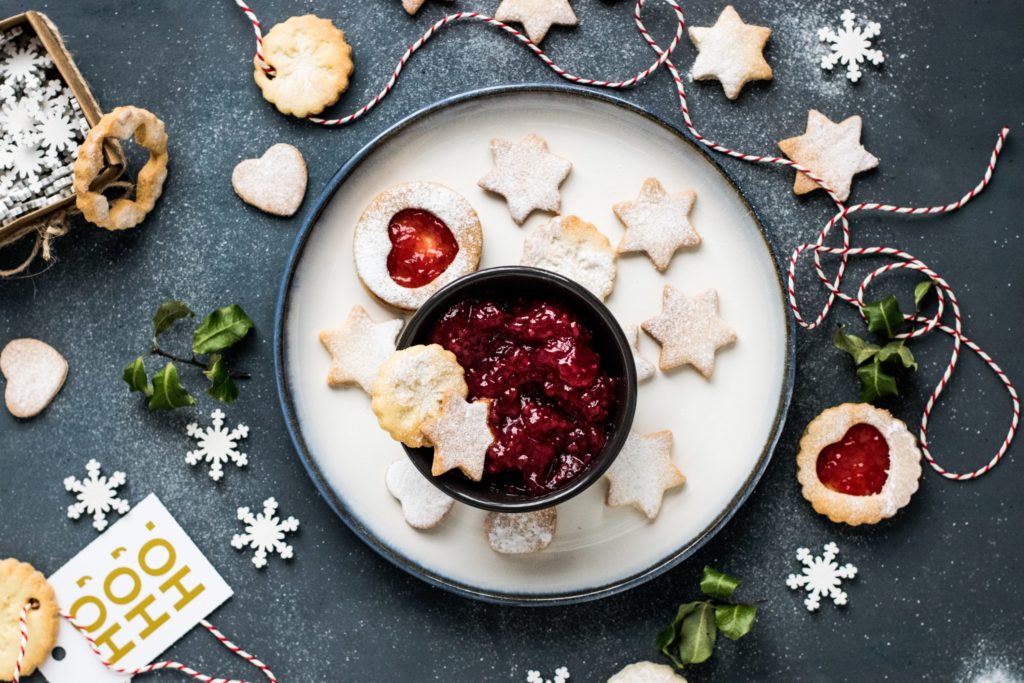For many, the most beautiful time of year is Christmas. The home is decorated, delicious food is prepared, and presents are exchanged with loved ones in celebration of Christmas. What all these things mean for the environment and the climate can quickly get lost in the holiday frenzy.
In England, a study showed that 80% more food is consumed nationwide at Christmas. This causes as much carbon dioxide emissions as driving more than 240 million kilometers by car. The portions of these foods also rises sharply over the holidays. In addition, there are countless felled trees, piles of wrapping paper, which is usually only used once, cards and unwanted gifts that end up in the trash a few days later.
Do you want to make the Christmas season more climate friendly this year? Even with small changes you will not only give yourself and your loved ones an even nicer Christmas, but you will also make an important contribution to ensuring that the Christmas season in the future is both a celebration of love and a celebration of love for the environment.
In this article we have collected tips and ideas for your sustainable Christmas.
A Truly Green Christmas Tree
According to a 2019 study by ESU and Kassensturz, plastic fir trees from China have by far the largest CO2 footprint. Yet real firs also pollute the environment with fertilizers, pesticides and transport emissions. When considering the total environmental impact, cultivated firs from intensive monoculture plantations have a higher footprint than artificial firs. The greenest way to celebrate is with a forest tree or a rental fir tree. On the ESU website, one can calculate the most sustainable solution for themselves.
When purchasing a tree, look for an organic or FSC label. No pesticides or fertilizers are used on these, which means that you bring less toxic substances into your home. Alternatively, you can buy a potted fir tree for your balcony, and decorate it in your living room each Christmas. This way you save money and CO2 and can enjoy the tree all year round.
Good Treats
Temptations in the supermarket are substantial during the Christmas season. Countless cookies and baking ingredients are awaiting us. However, it is advisable to check the ingredients in cookies, baked goods and marzipan carefully, as they often contain palm oil.
Palm oil production destroys millions of hectares of tropical rainforests worldwide, which provide habitats for countless species as well as absorb carbon dioxide. Their deforestation accelerates climate change and threatens biodiversity. So look for an RSPO or organic seal of approval when purchasing. Even better, of course, is to avoid products containing palm oil altogether.
If you are doing the baking yourself, it is easy to use regional ingredients and omit palm oil. The most ecological way is to obtain ingredients from your local organic farmer.

Beet Wellington instead of Beef Wellington
Celebrating Christmas together with a feast: For many this is a special occasion in the spirit of giving. For the festive meal, meat or fish is frequently on the menu. If you don’t want to do without it at Christmas, go for organic meat of Swiss origin. For wild fish you can use the MSC label and for fish farms the organic label. Avoid game fish and overfished species (swordfish, red snapper, tuna, red perch, spiny dogfish, and tropical shrimps). Often these are not sustainably harvested with sea turtles and dolphins dying as by-catch. Worldwide meat production is responsible for 14.5% of all greenhouse gases, or 7.1 gigatonnes of CO2 equivalents, every year.
If you want to enjoy a climate-friendly Christmas meal, you can put together a delicious menu from countless vegetarian and vegan recipes. For example, how about a Beet Wellington instead of a Beef Wellington? Or our exclusive, climate-friendly 3-course menu?

Decorating without Damage
From tree decorations to candles and fairy lights to paper napkins, the list of Christmas decorations is long. However, for many of these items it is not “use every year,” but “new year, new decoration.” You can change this practice with a few simple measures.
Do without tinsel, artificial snow from a spray can and plastic ornaments. Instead, decorate the Christmas tree with items made from natural materials such as wood and glass. In the past, it was traditional to decorate the tree with edible items such as nuts and cookies, and to eat them after the feast. An ideal concept for enjoyment and the environment. If you also want to use candles as tree or general Christmas decorations, look for natural materials like beeswax or stearin. Paraffin candles, on the other hand, are un-ecological and produce more soot.
Twinkling Christmas lights warms everybody’s hearts. Again, you can easily switch to a more climate-friendly alternative by using LED fairy lights and not leaving them on all the time. During the day you can’t see them properly anyway and at night most people are asleep. Therefore, a timer is recommended so that you can enjoy the lights at the appropriate times.
The Christmas dinner table should also be decorated with natural materials, cloth tablecloths and napkins. By using reusable decorations, you produce less waste and protect the environment. You will also save time and money in the oft stressful pre-holiday season.
Environmentally Friendly Giving
Mounds of presents and mounds of Christmas paper – a joy for children but a disaster for the environment. Wrapping paper is usually not recycled and ends up in the trash after Christmas along with unwanted or useless presents. Give with care and attention. Did a gift have to be flown in from faraway? Can the recipient really use this gift? Wouldn’t a dinner together, a donation to a good cause or a trip to the mountains be a much nicer and more meaningful present than material things?
With just a few small changes, we can protect the climate even at Christmas. What is your tip for a more sustainable Christmas season?
If you’ve found something to wrap, pay attention to the wrapping paper you use. FSC-certified paper or recycled paper with the Blue Angel is more sustainable. Remember: only wrapping paper that doesn’t contain plastic can be recycled. As a simple test when unpacking, try crumpling the paper into a ball. If it remains crumpled, it can most likely be recycled as waste paper. There are also fabric gift bags that can be easily recycled for any occasion. Or try to reuse old wrapping paper, boxes or newspapers. Let your creativity flow!
MYBLUEPLANET wishes you a Joyful and Sustainable Christmas!
Author: Alison Brooks.


